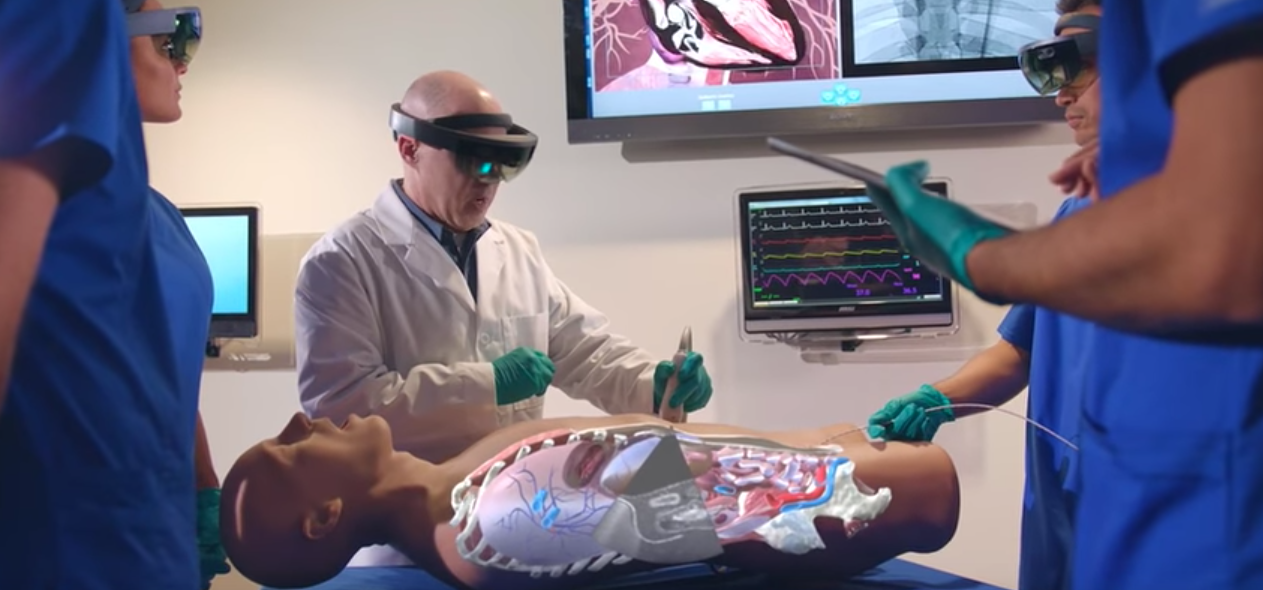LucinaAR pairs with HoloLens for augmented reality birthing simulation training
Published · Updated
CAE Healthcare recently released LucinaAR, an augmented reality birthing simulation training application that is bringing obstetric operating skills training to the next level. LucinaAR employs Microsoft’s HoloLens and it includes life-sized models of the mother and fetus. Mixed reality birthing simulations can be experienced through the HoloLens headset.
With the software’s guidance and Microsoft’s HoloLens headset on, a person interacting with the birthing simulation will be able to view various stages of pregnancy through 3D holograms shown onto the mannequin of the mother using augmented reality technology.
While the LucinaAR childbirth simulation is designed to work with the two mannequins in the classroom, students can also practice the simulation with only the HoloLens.
LucinaAR and the stages of childbirth
Beyond helping students study practical skills they will need in the operating room, LucinaAR is able to walk them through a variety of pregnancy stages up through childbirth. This mixed reality childbirth simulation also aids them in learning how to deal with problems such as shoulder dystocia, which is an uncommon pregnancy occurrence that can make delivering a baby substantially difficult.

By giving all medical students a first-hand view, augmented reality birthing simulation training is promising to pave a new way of teaching at universities and colleges around the world.
Beyond augmented reality childbirth simulations
Additional modules are expected to be added to the lineup to educate students about other potential birthing situations. CAE also plans to release similar products to delve into other areas of study beyond childbirth simulation training.
Since the HoloLens gives users 3-dimensional, real-time views of anatomy, it is quickly becoming the go-to device in the world of augmented or mixed reality and medical training. This technology is helping students understand what is happening in the context of a real patient situation, which provides a much more accurate and immersive learning environment compared to training videos or 2D models.
Beyond training students about childbirth-related operations, Augmented Reality is also on the verge of being employed during operations and medical procedures to increase accuracy and improve patient outcome by giving doctors and nurses real-time statistical feedback, guidance, and data they that need to achieve a successful operation.
Using LucinaAR
LucinaAR is already being used in universities by medical students from all over. LucinaAR childbirth simulation is available to be purchased from CAE Healthcare and it is expected to continue growing in popularity as the company expands upon its abilities and training modules. As the company adds more complicated augmented reality birthing situations for students to work through, and as word continues to spread about the power of augmented reality in medical training, CAE healthcare anticipates more and more users will begin using mixed reality to study and learn with this innovative, hands-on approach to classroom work.
Want to see more?
Join us for an Online Class!
AR & The Future of Healthcare
March 6, 2018 10am PST
Author Shel Israel and healthiAR.com founder Kristi Hansen Onkka will discuss LucinaAR and many other innovators working to change patient care using augmented and virtual reality technology. Use code HEALTH20 for $20 off listed price.






What do you think?
1 Community thoughts on "LucinaAR pairs with HoloLens for augmented reality birthing simulation training"
[…] key here is the “real-time” aspect of SentiAR’s technology. While companies like CAE healthcare have been using HoloLens for holographic mixed-reality training simulations, SentiAR is one of the […]